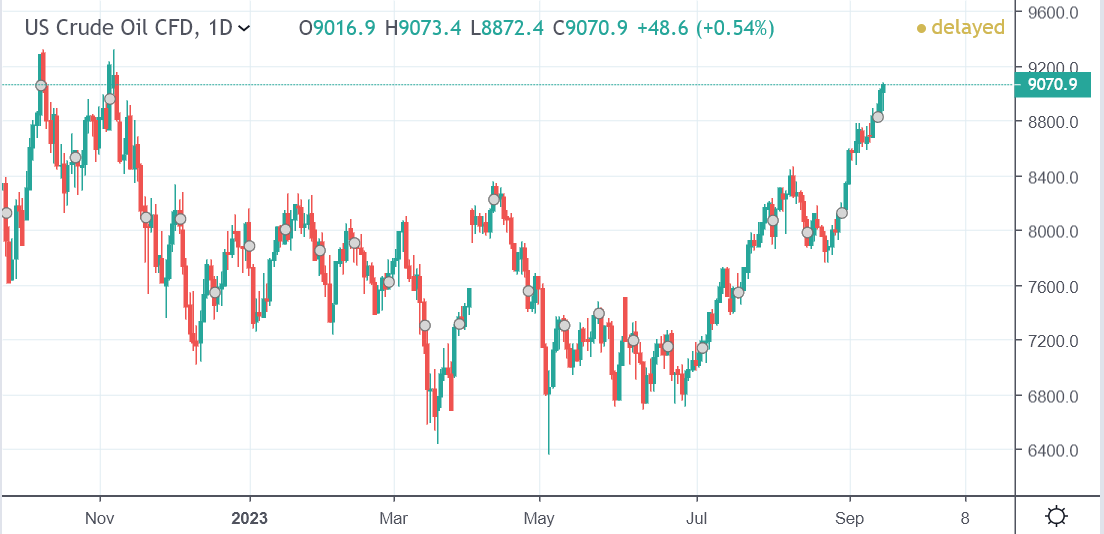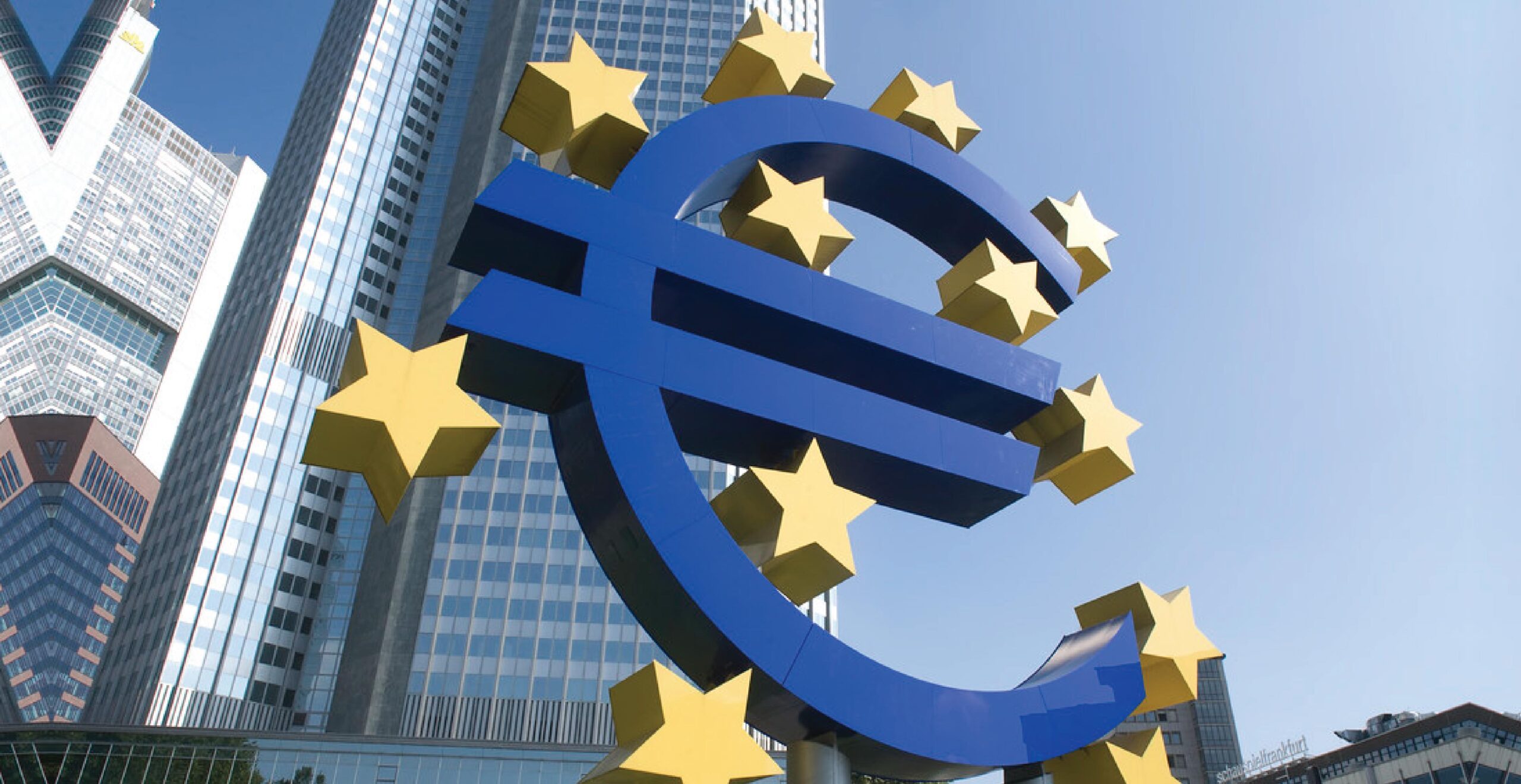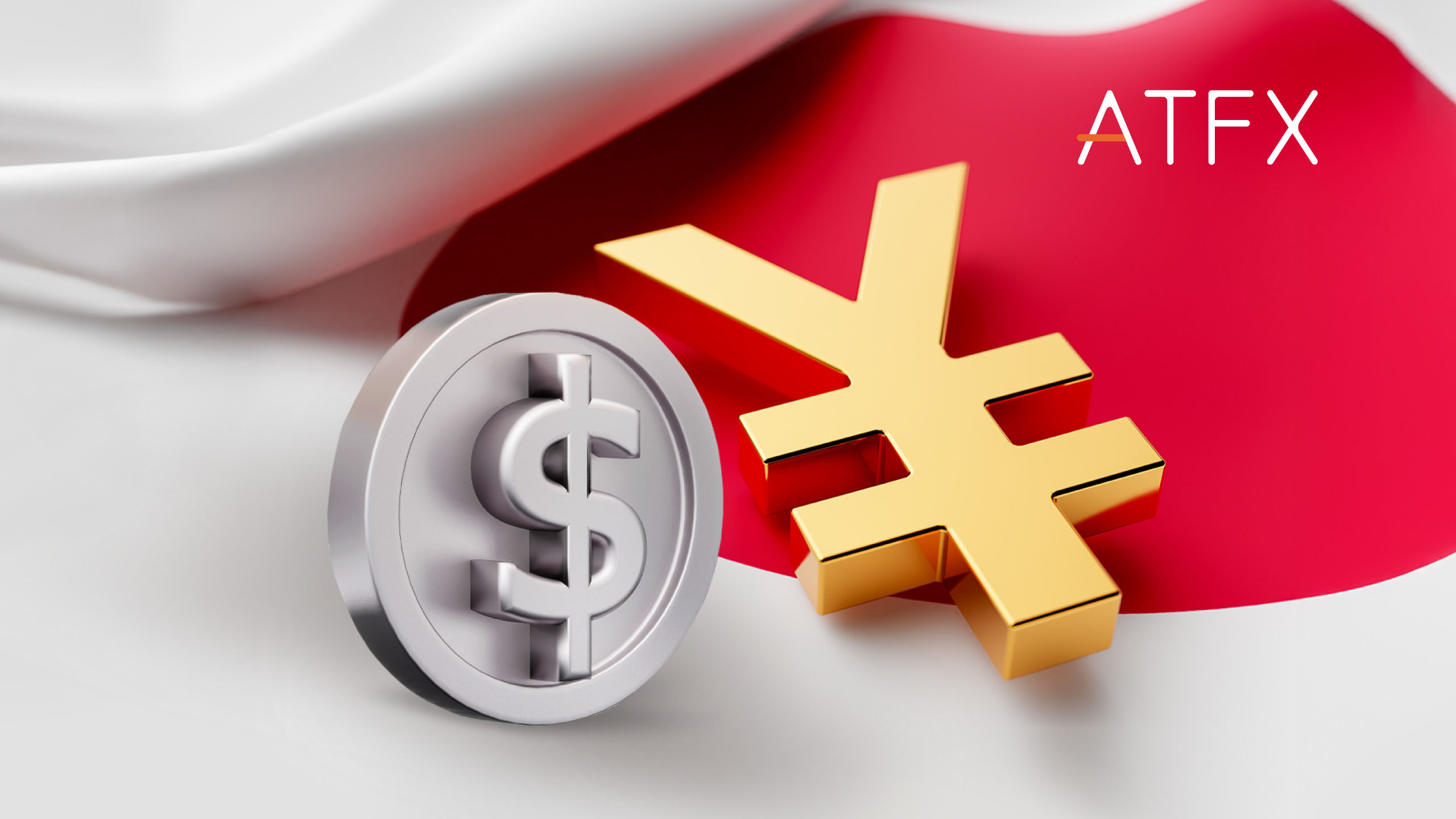The US oil price is steady at a 10-month high and awaits the Fed meeting on Wednesday after a surprise inflation beat in the US.

USOIL: Daily Chart
Crude oil continued its rally last week, pushing WTI higher by about 4.6%. WTI has risen for three weeks, reaching its highest point since November. It is also on track for its most significant quarterly increase since Russia invaded Ukraine in the first quarter of 2022.
This week, traders will closely monitor interest rate policies set by central banks, including the Federal Reserve. Before, the market could face a 2 million barrels per day (bpd) deficit in the fourth quarter due to output cuts by Saudi Arabia and Russia.
As Chinese refineries ramp up production to leverage strong export margins, the OPEC+ group has decided to extend the supply cuts until the end of this year. This could lead to a drawdown in inventories, making the market vulnerable to further price hikes in 2024.
Several central bank meetings are taking place this week, with the Federal Reserve being the most notable. Starting on Tuesday, the two-day conference is expected to maintain its hawkish outlook despite keeping interest rates on hold. This comes after an increase in inflation, which points to higher interest rates for a longer period in the US. However, this could pressure the economy and reduce oil demand.
Additionally, US fuel demand is expected to decrease in the upcoming months after the end of the summer season. The meeting will also decide the dollar’s direction, which traded near a six-month high on Monday. A stronger dollar is likely to harm oil markets.
Apart from the Federal Reserve, the Bank of England, the People’s Bank of China, and the Bank of Japan also have rate decisions this week.
The BOE is expected to increase interest rates by 25 basis points, while the PBOC and the BOJ are expected to keep rates unchanged. However, the market will be watching for any signals from the BOJ regarding future policy, as some members of the Japanese central bank have suggested a possible end to its hostile rate regime.
In China, the PBOC is expected to keep its loan prime rates on hold as it tries to balance supporting the economic recovery and preventing further weakness in the yuan.
Last week, optimism over the improving economic conditions in China helped oil markets, following some better-than-expected readings for industrial production and retail sales in August. The PBOC also reduced reserve requirements for Chinese lenders, providing more monetary support for the economy.


